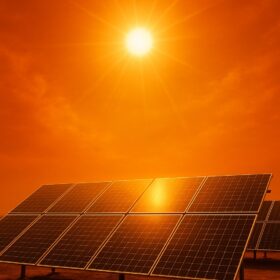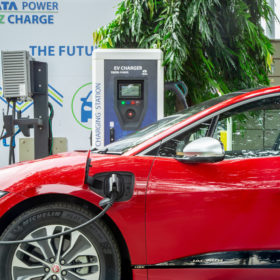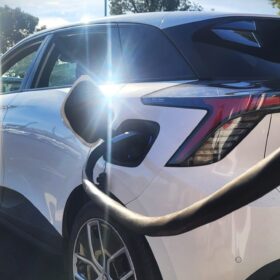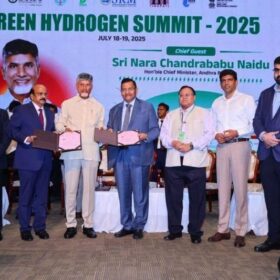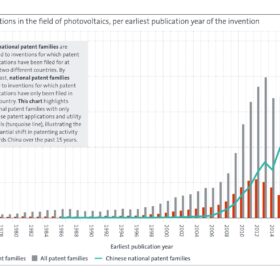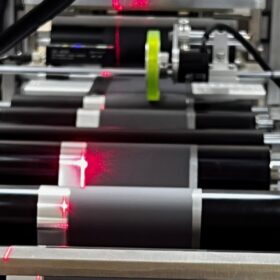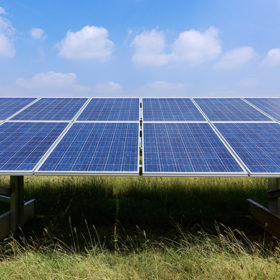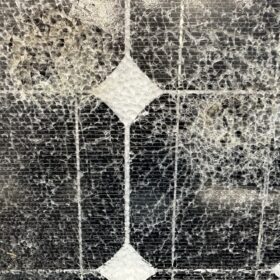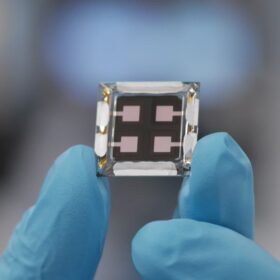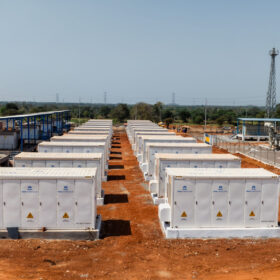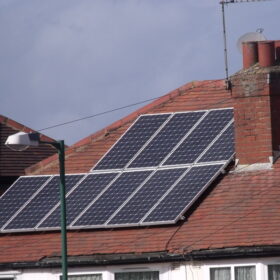Novel switched capacitor boosting inverter for PV usage
Researchers have designed a new switched-capacitor-based multilevel inverter topology with nine switches. They have tested it in simulations and in hardware-in-the-loop tests. Efficiency reached up to 96.5%.
Dual PV module cooling tech based on water, air
Scientists in Hungary have built an experimental rig that uses a 60 W polycrystalline solar panel with 152 holes drilled into its frame for air cooling, as well as high-conductivity copper alloy pipes and fins placed on its back for water cooling.
Just 3% of India’s 2032 wind and solar target can power its entire EV fleet: Ember
Reliably meeting EV charging requirements from renewables requires demand-shifting mechanisms like time-of-day tariffs in conjunction with infrastructure improvements.
Wireless electric vehicle charging tests improve efficiency by 88%
Scientists in India have simulated and tested a prototype wireless charging system for electric vehicles, with a three-port DC–DC converter at its core and have found it achieved an improved efficiency of 88%.
JK Srivastava Group, Hynfra join forces to build $4 billion green hydrogen and ammonia hub in Andhra Pradesh
JK Srivastava Hynfra has signed a memorandum of understanding with NREDCAP to develop a green hydrogen and ammonia hub with a capacity to produce up to 1 million tons of green ammonia annually, powered by 3 GW of solar and wind energy. Operations are expected to begin in early 2029.
Photovoltaic inventions increased seventeen-fold in three decades
The European Patent Office says China has overtaken other countries in photovoltaic patent filings over the past 15 years, while European startups and universities retain a lead in agrivoltaics and niche solar applications.
Li-S achieves Australian first with lithium metal foils
Li-S Energy has produced Australia’s first lithium metal foils at its cell production facility in Victoria, a milestone the company says supports its broader mission to commercialise high-performance lithium-sulfur and lithium metal batteries.
Meeting evening peaks with clean power requires a three-pronged strategy: IEEFA
The persistent evening peaks, which now nearly match daytime highs, reinforce the urgency of deploying storage solutions, demand-side measures and hybrid renewable projects to meet post-sunset demand.
Upcycling solar glass waste to use in solid-state lithium batteries
Nanyang Technological University researchers have milled solar panel glass waste for use in cathodes used in solid state lithium metal batteries. When used as a functional filler in solid polymer electrolyte (SPE) material, the resulting battery performance was maintained over 80 charge cycles with an 8.3 % improvement over the reference device.
Four-year outdoor testing shows perovskite cells suffer from high seasonality
Testing conducted by the Helmholtz-Zentrum Berlin in Germany has shown that perovskite solar cells operating at high latitudes in Europe may suffer from higher performance losses in winter compared to conventional PV devices. The scientists warned, however, that at lower latitudes this seasonality may be less pronounced.

